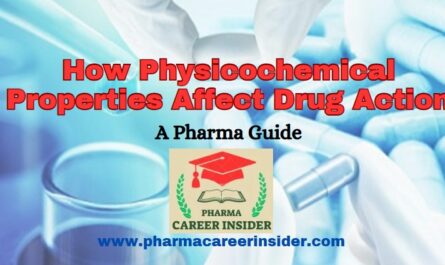Semi-solid dosage forms, such as ointments, creams, gels, and pastes, require various excipients to achieve the desired texture, stability, drug release, and patient acceptability. Excipients play a crucial role in determining the efficacy, absorption, and shelf-life of these formulations.
This article explores the types, functions, and examples of excipients commonly used in semi-solid pharmaceutical preparations.
Why Excipients Are Essential in Semi-Solid Formulations
Excipients play a crucial role in the formulation of semi-solid dosage forms, such as creams, ointments, gels, and pastes. While the active pharmaceutical ingredient (API) is responsible for the therapeutic effect, excipients contribute significantly to the drug’s stability, delivery, absorption, and overall efficacy. Below are the key reasons why excipients are indispensable in semi-solid formulations.
1. Enhancing Drug Stability
Many active pharmaceutical ingredients are sensitive to environmental factors like temperature, light, oxygen, and moisture. Without appropriate excipients, APIs may degrade, leading to reduced potency and shelf-life.
- Antioxidants (e.g., Butylated Hydroxytoluene (BHT), Tocopherols) prevent oxidation, which is a major cause of drug degradation.
- Chelating Agents (e.g., Ethylenediaminetetraacetic Acid (EDTA)) bind to metal ions that can catalyze degradation reactions.
- Buffering Agents (e.g., Citric Acid, Sodium Hydroxide) help maintain the pH of the formulation, preventing unwanted chemical reactions.
For example, in topical formulations containing retinoids (used for acne treatment), antioxidants like BHT and tocopherols are used to prevent oxidation and maintain drug potency.
2. Improving Drug Solubility and Bioavailability
Certain drugs have poor water solubility, making it difficult for them to be absorbed effectively when applied to the skin. Excipients help dissolve the API and ensure its availability at the site of action.
- Solubilizers (e.g., Propylene Glycol, Polyethylene Glycol) enhance the solubility of poorly water-soluble drugs.
- Surfactants (e.g., Polysorbates, Sorbitan Esters) aid in dispersing the drug in the formulation, improving absorption.
For instance, hydrophobic drugs like ketoconazole (used in antifungal creams) require solubilizers such as polyethylene glycol (PEG) to ensure proper dispersion and absorption in the skin.
3. Facilitating Drug Release and Penetration
For semi-solid formulations applied topically, drug penetration through the skin barrier is critical. Excipients help modify the skin’s permeability and improve drug diffusion.
- Penetration Enhancers (e.g., Dimethyl Sulfoxide (DMSO), Lecithin, Urea) alter the skin’s structure, allowing more drug molecules to pass through.
- Emulsifiers (e.g., Sodium Lauryl Sulfate, Cetrimide) create stable emulsions, ensuring even drug distribution and absorption.
A well-known example is diclofenac emulgel, where penetration enhancers like propylene glycol increase drug diffusion through the skin, leading to faster pain relief.
4. Ensuring Proper Consistency and Texture
The texture of a semi-solid formulation directly impacts its spreadability, patient comfort, and ease of application. Excipients help achieve the right consistency and viscosity.
- Gelling Agents (e.g., Carbopol, Hydroxyethyl Cellulose) provide structure and thickness to gels.
- Viscosity Modifiers (e.g., Xanthan Gum, Bentonite) ensure uniform application and retention of the drug on the skin.
For example, in dermatological gels, Carbopol is commonly used to create a smooth, non-greasy texture that patients find easier to apply.
5. Preventing Microbial Contamination
Semi-solid dosage forms often contain water, making them susceptible to microbial growth. Preservatives are essential to maintain sterility and prevent infections.
- Antibacterial Preservatives (e.g., Benzalkonium Chloride, Chlorocresol) inhibit bacterial growth.
- Antifungal Preservatives (e.g., Methylparaben, Sorbic Acid) prevent mold and yeast contamination.
For example, ophthalmic ointments require preservatives like benzalkonium chloride to maintain sterility throughout their shelf life.
6. Prolonging Shelf-Life
Pharmaceutical manufacturers aim for formulations with extended shelf stability. Excipients play a role in maintaining the product’s integrity over time.
- Moisture Retainers (e.g., Glycerin, Sorbitol) prevent drying and maintain formulation consistency.
- Antioxidants and Chelating Agents prevent degradation caused by environmental factors.
A classic example is hydrocortisone cream, where stabilizers like EDTA enhance the product’s longevity by preventing oxidation.
7. Improving Aesthetic and Sensory Appeal
Patient acceptability is a major factor in medication adherence. Excipients help improve the look, feel, and scent of the formulation.
- Coloring Agents (e.g., Titanium Dioxide, FD&C Dyes) improve visual appeal.
- Flavoring Agents (e.g., Menthol, Vanillin) enhance the product’s fragrance or taste.
For instance, menthol is commonly added to pain-relief gels to provide a cooling sensation that enhances patient comfort.
8. Ensuring Homogeneity of the Drug
Excipients help distribute the active ingredient evenly, preventing uneven dosing.
- Suspending Agents (e.g., Microcrystalline Cellulose, Colloidal Silicon Dioxide) keep the drug dispersed uniformly.
- Emulsifiers ensure stable mixtures of oil and water-based components.
For example, in hydrophilic creams, emulsifying wax ensures that water and oil components remain uniformly mixed, preventing phase separation.
Types and Functions of Excipients in Semi-Solid Dosage Forms
1. Bases (Vehicle/Carrier)
Bases serve as the primary medium for drug incorporation and release. The selection depends on spreadability, occlusiveness, and drug compatibility.
Types of Bases:
- Hydrocarbon Bases: Provide occlusion and prevent moisture loss. Examples: Petrolatum, paraffin, mineral oil.
- Absorption Bases: Absorb water and form emulsions. Examples: Lanolin, beeswax, wool fat.
- Water-Soluble Bases: Easily washable and non-greasy. Examples: Polyethylene glycol (PEG), glycerin.
- Emulsion Bases: Provide enhanced drug penetration and spreadability. Examples: Cetyl alcohol, stearyl alcohol, emulsifying wax.
2. Emulsifiers
Emulsifiers help stabilize emulsions by reducing surface tension between oil and water phases.
Types of Emulsifiers:
- Anionic Emulsifiers: Provide good stability in alkaline conditions. Examples: Sodium lauryl sulfate, potassium stearate.
- Cationic Emulsifiers: Effective antimicrobial properties. Examples: Benzalkonium chloride, cetrimide.
- Non-Ionic Emulsifiers: Compatible with most pharmaceutical ingredients. Examples: Polysorbates (Tween), sorbitan esters (Span).
3. Gelling Agents (Thickening Agents)
These agents impart viscosity and structure to gels, creams, and ointments.
Examples:
- Natural Polymers: Xanthan gum, alginate, gelatin.
- Synthetic Polymers: Carbopol, hydroxyethyl cellulose (HEC), hydroxypropyl methylcellulose (HPMC).
- Inorganic Gelling Agents: Bentonite, colloidal silicon dioxide.
4. Preservatives
Preservatives prevent microbial contamination and ensure product safety.
Types of Preservatives:
- Antibacterial Preservatives: Benzyl alcohol, phenol, chlorocresol.
- Antifungal Preservatives: Methylparaben, propylparaben, sorbic acid.
- Broad-Spectrum Preservatives: Benzalkonium chloride, thimerosal.
5. Humectants
Humectants help attract and retain moisture, preventing semi-solid formulations from drying out.
Examples: Glycerin, Propylene glycol, andSorbitol.
6. Penetration Enhancers
These excipients enhance drug permeability through the skin by modifying the stratum corneum.
Examples: Dimethyl sulfoxide (DMSO), Urea, Lecithin, andMenthol.
7. Stabilizers and Antioxidants
They prevent oxidation and degradation of active ingredients, thereby enhancing stability.
Examples:
- Antioxidants: Butylated hydroxyanisole (BHA), butylated hydroxytoluene (BHT), tocopherols.
- Chelating Agents: EDTA (ethylenediaminetetraacetic acid), citric acid.
8. pH Adjusters (Buffering Agents)
These helps maintain the optimal pH for stability and compatibility.
Examples: Sodium hydroxide (NaOH), Citric acid, andAcetic acid.
9. Coloring and Flavoring Agents
These agents improve the aesthetic appeal and patient acceptability of formulations.
Examples: Coloring Agents (Titanium dioxide, iron oxides, FD&C dyes), Flavoring Agents (Menthol, vanillin, fruit essences).
Quality Control and Selection of Excipients
The selection of excipients is based on:
- Compatibility with the active pharmaceutical ingredient (API).
- Desired consistency and spreadability.
- Stability and shelf-life considerations.
- Patient safety and regulatory guidelines.
Challenges in Excipient Selection and Formulation Development
Selecting the right excipients for semi-solid formulations is challenging due to factors like API compatibility, regulatory constraints, stability concerns, and patient preferences. Excipients must not interfere with drug efficacy, cause irritation, or degrade over time. Additionally, achieving the right consistency, spreadability, and absorption while ensuring microbial stability requires careful formulation design. Regulatory approval adds another layer of complexity, as excipients must meet safety and quality standards set by agencies like the FDA and EMA.
Importance of Excipients in Drug Formulation
Excipients are not just inactive ingredients; they significantly impact the efficacy of drug delivery. Studies indicate that improper selection of excipients can lead to poor bioavailability and instability of the formulation.
For instance, research published in the Journal of Pharmaceutical Sciences highlights how the use of incorrect emulsifiers in creams led to phase separation and reduced drug efficacy. Therefore, regulatory bodies such as the FDA and EMA emphasize rigorous quality control of excipients in pharmaceutical formulations.
Advancements in Excipients for Semi-Solid Dosage Forms
With technological advancements, novel excipients have been developed to enhance drug delivery.
- Lipid-Based Excipients: Improve bioavailability by increasing solubility.
- Nano-Emulsions: Provide enhanced skin penetration.
- Biodegradable Polymers: Reduce toxicity and improve patient compliance.
Conclusion
Excipients are essential in semi-solid dosage forms to ensure drug stability, absorption, and patient compliance. Careful selection of excipients enhances therapeutic efficacy, texture, and usability. Future advancements in nanotechnology and biocompatible excipients are expected to further improve semi-solid drug delivery systems.
Frequently Asked Questions (FAQs)
1. What is the role of emulsifiers in semi-solid formulations?
Answer: Emulsifiers stabilize the oil-water interface and prevent phase separation in creams, lotions, and ointments.
2. Why are preservatives necessary in semi-solid dosage forms?
Answer: Preservatives prevent microbial contamination, ensuring product safety and prolonged shelf-life.
3. How do penetration enhancers work?
Answer: They modify the skin barrier (stratum corneum) to enhance drug absorption.
4. What are some natural gelling agents?
Answer: Common natural gelling agents include xanthan gum, gelatin, and alginate.
5. How are antioxidants beneficial in semi-solid formulations?
Answer: Antioxidants prevent oxidation and extend the stability of active pharmaceutical ingredients.



